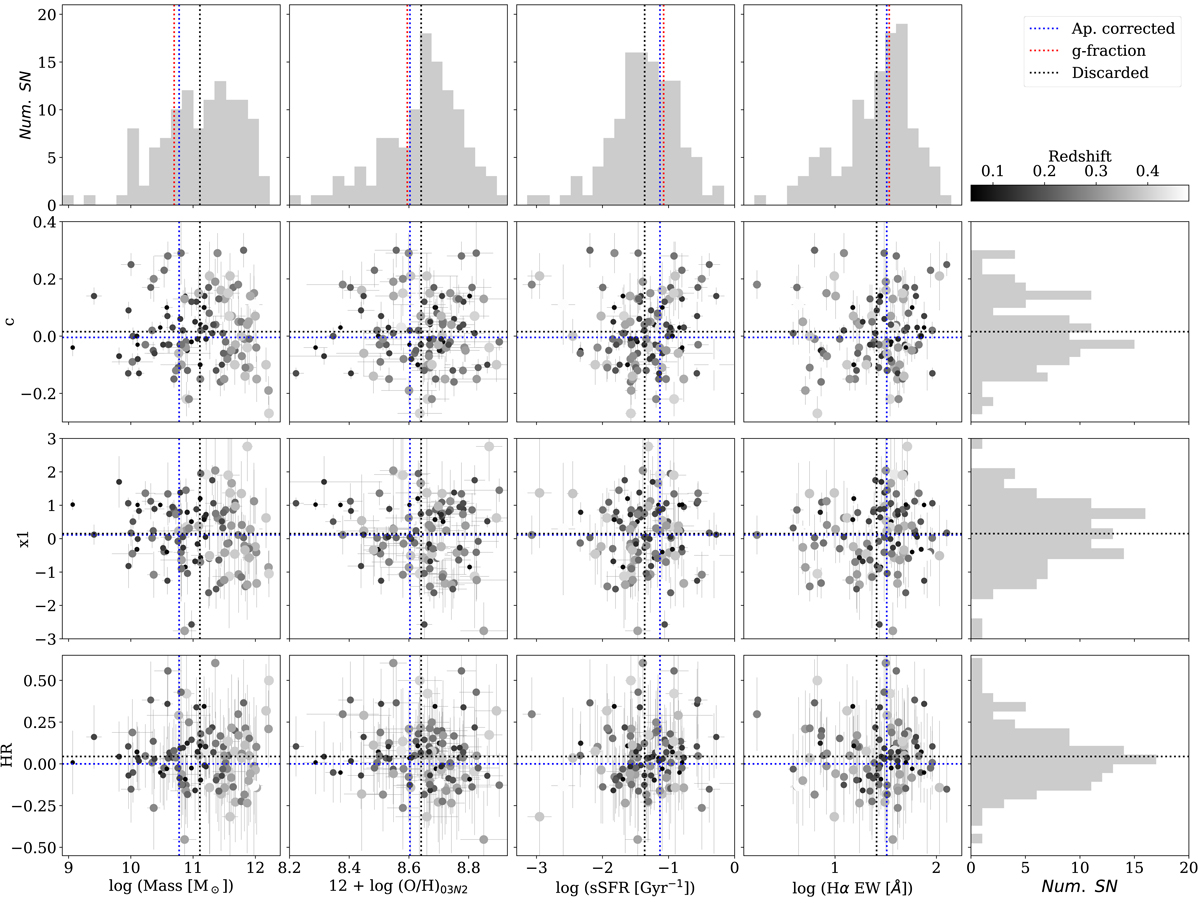Fig. 10.

Download original image
SN Ia light-curve x1 and c parameters and Hubble residual dependences on stellar mass, oxygen abundance, sSFR, and HαEW of the 114 objects that are discarded using the g-band fraction criterion. Black lines represent the mean of the distribution, and red and blue lines represent the mean of the g-band fraction and aperture-corrected samples, respectively. Regarding light-curve parameters and Hubble residuals, while the three original distributions are centered at zero, these discarded objects have positive averages in the three distributions, leaving on average more negative biased distributions in the g-band fraction sample. Moreover, discarded objects have, on average, a larger stellar mass, lower HαEW, lower sSFR, and higher metallicity with respect the aperture-corrected sample, so the g-band fraction criterion also leaves a sample of SNe Ia and host galaxies that are biased toward the other side of the distributions.
Current usage metrics show cumulative count of Article Views (full-text article views including HTML views, PDF and ePub downloads, according to the available data) and Abstracts Views on Vision4Press platform.
Data correspond to usage on the plateform after 2015. The current usage metrics is available 48-96 hours after online publication and is updated daily on week days.
Initial download of the metrics may take a while.


